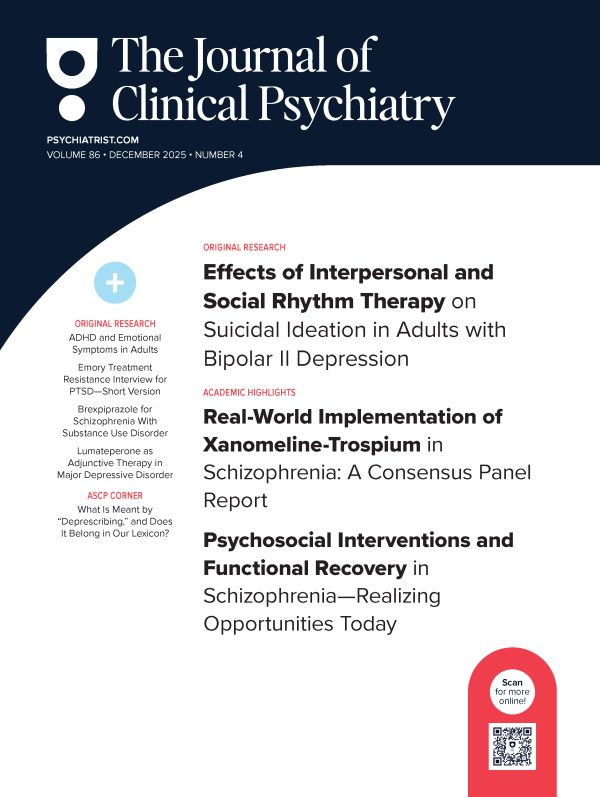Background: High rates of comorbid anxiety disorders have been described in individuals with bipolar disorder. Although it is well recognized that anxiety disorders often co-occur with bipolar disorder, few studies have examined the impact of more than 1 anxiety disorder on long-term outcome in patients with bipolar disorder.
Method: The rates of DSM-IV generalized anxiety disorder, panic disorder, social phobia, obsessive-compulsive disorder, and posttraumatic stress disorder were determined using structured clinical interviews in 138 patients with bipolar disorder who presented consecutively between 1994 and 1999. Patients were then followed for up to 3 years with longitudinal clinical surveillance. The impact of 1 or more comorbid anxiety disorders on mood symptoms and general function was evaluated.
Results: In our sample, 55.8% of the patients had at least 1 comorbid anxiety disorder, and 31.8% had 2 or more anxiety disorder diagnoses. The most common anxiety disorder was generalized anxiety disorder, followed by panic disorder. The presence of an anxiety disorder led to significantly (p < .05) worse outcome on global as well as specific illness measures, including illness severity, proportion of patients characterized as euthymic, and proportion of the year spent ill. Number of anxiety disorders was less important than type, with generalized anxiety disorder and social phobia having the most negative impact on outcome.
Conclusion: Our data suggested that multiple anxiety disorder comorbidities were not infrequent in bipolar disorder and that generalized anxiety disorder and social phobia were more likely to be associated with poor outcome. We discuss some potential mechanisms and implications in our findings.
Please sign in or purchase this PDF for $40.00.





